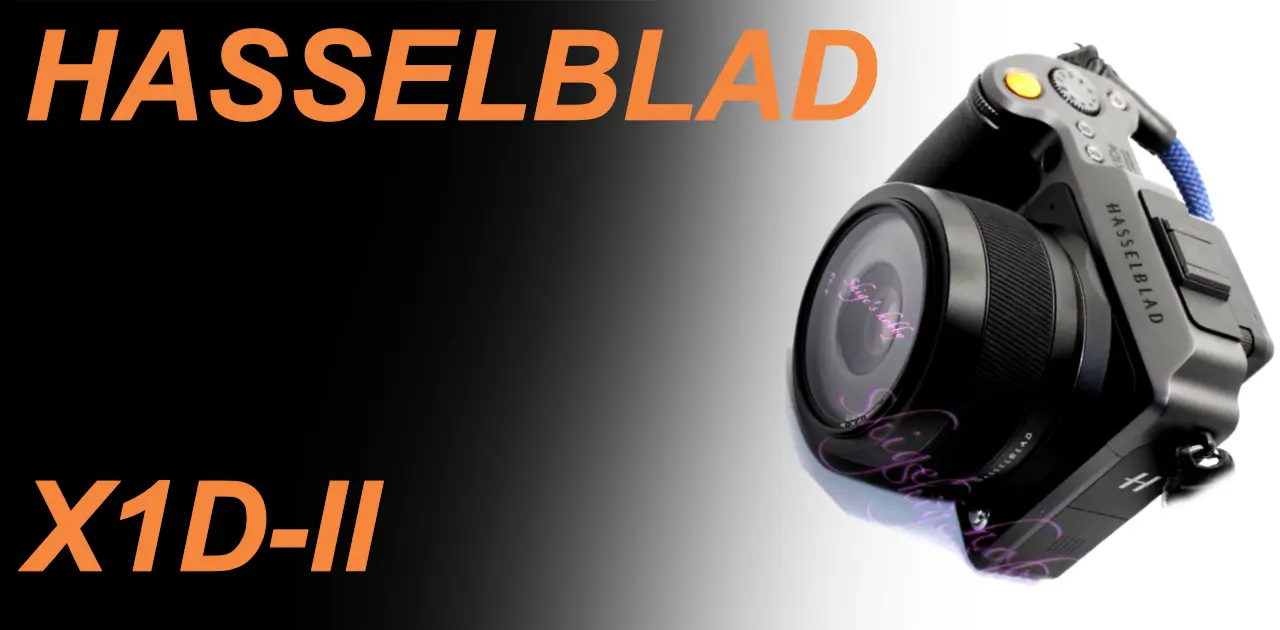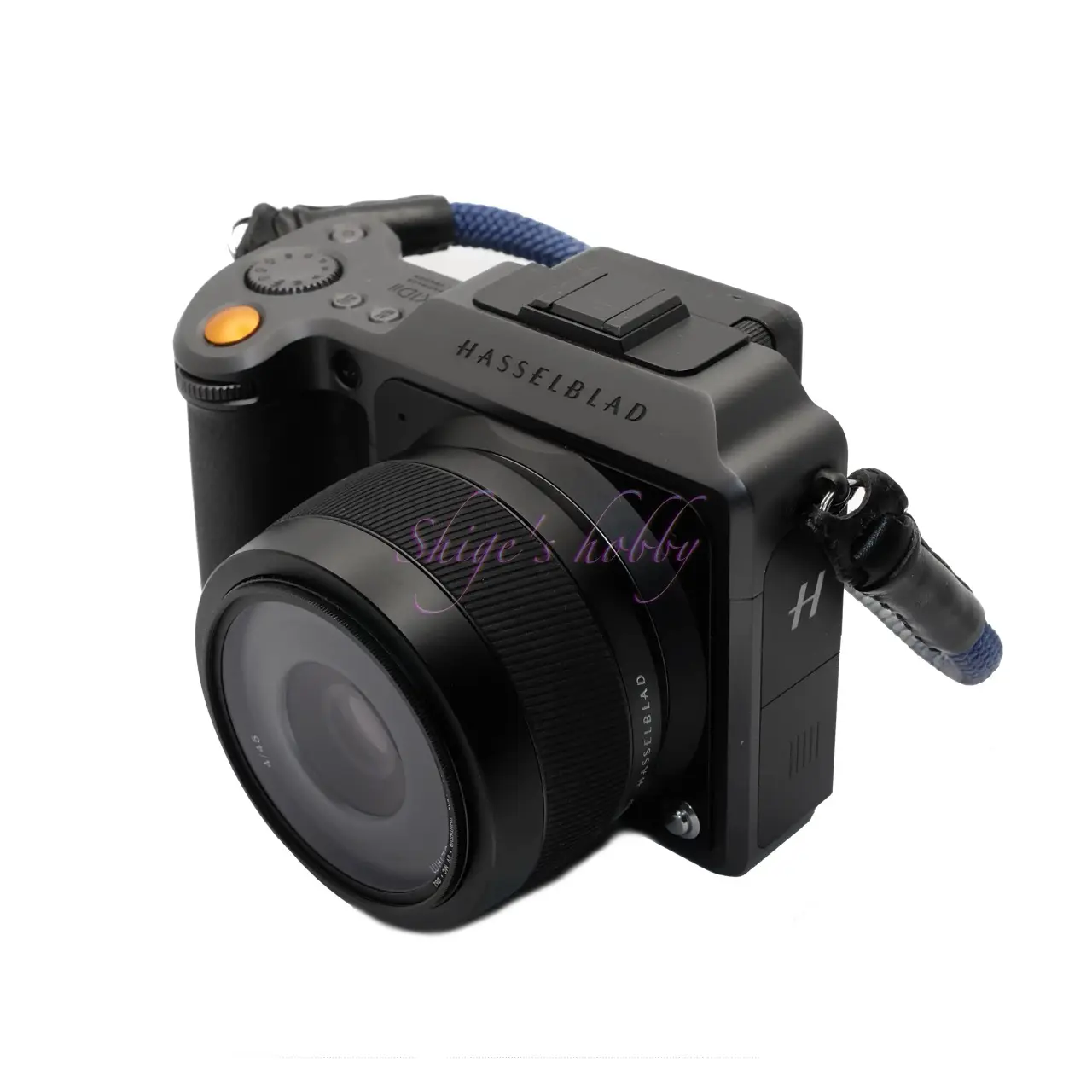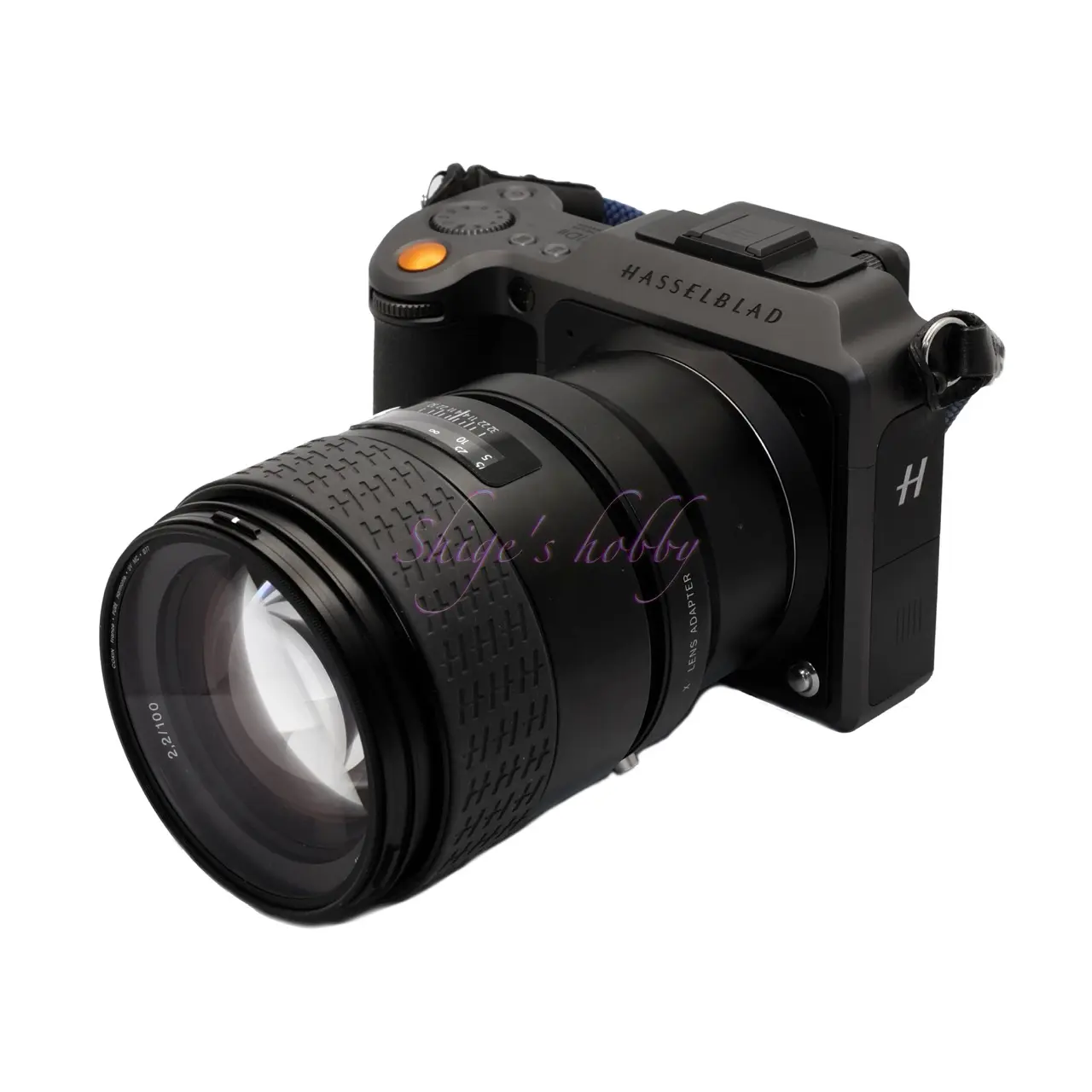2nd Swedish mirrorless camera: X1DII 50C

A review and Photo example of the X1DII 50C.
- Please see the disclaimer regarding advertising here.
- Italicized links in the text are advertisement links that take you to other sites.
Table of contents

Gallery
Review


1.Overview
The Hasselblad X1DII 50C (X1D2 50C) is a mirrorless camera with a medium-format digital sensor released in 2019.
Detailed specifications are listed in the table, but the main specifications are as follows.
- Sensor pixel count: 50 megapixels
- Sensor size 44 x 33 mm
- OLED viewfinder / Approximately 2.36 million pixels
- 3.6-inch 2.36 million pixel TFT display
- SDXC compatible / SD card dual slot
- Camera has no shutter mechanism
- Sensor shutter available
- Camera startup time: Approximately 3 seconds
When using a dedicated XCD lens or XH lens adapter, the HC/HCD lens has a focal length that is 0.8 times the 35mm focal length.
The HASSELBLAD X series serves to rescue the HASSELBLAD H lens, and the XH adapter and XH Converter 0.8 are provided. When the XH adapter is used, the focal length is 0.8 times the 35mm focal length, and when the XH Converter 0.8 is used, the 0.8x focal length conversion by the wide converter built into the adapter is added to the 0.8x conversion by the sensor size, resulting in a focal length that is almost medium format.
2.Usability
The Hasselblad X1DII 50C (X1D2 50C) is the successor to the X1D 50C (4116 edition), and while it has the same number of pixels, it has been improved with shorter start-up times and improved video recording functions.
The sensor is the same, so the image quality is the same as the X1D 50C (4116 edition), and it is impossible to tell the difference without looking at the exif information. When using a dedicated XCD lens, like the old camera, the focal length is 0.8 times the focal length of a 35mm lens.
I purchased the X1D II as a replacement for my X1D 4116 Edition.
The stressful start-up wait time was about 5 seconds compared to about 3 seconds for the X1D, and the X1DII is faster, and when I started it up for the first time, I thought I should have bought it sooner.
Compared to Japanese cameras that start up instantly, the start-up time is not much different, so don’t get your hopes up too high. In order to capture the moment you want to shoot, you need to keep the camera on at all times. It also takes a while to return from sleep mode, so you need to set the sleep time to suit your shooting style in the settings. Also, using the camera in sleep mode can cause battery wear.
Another improvement since the X1DII is that it is less prone to overheating. When shooting continuously with the X1D, the camera grip and bottom would get hot, and sometimes I would be unable to shoot due to overheating. However, since switching to the X1DII, I have not encountered this phenomenon.
The viewfinder has also been changed from the X1D, from LCD to OLED, and the refresh rate has increased, but I don’t feel much difference from the X1D. Due to a change in the shape of the eye sensor, the eye sensor may malfunction in places where sunlight is shining, and the camera may not switch to EVF. After about a month of use, the eye sensor broke down and had to be repaired. Although the repair was within the warranty, the only replacement available was the X1D 50C, so I had to use the X1D for about half a month until the repair was completed.
One of the drawbacks of the X1D II is that the diopter adjustment dial on the eye sensor is looser than that of the X1D, and it often changes on its own in the camera bag. As long as you are using it alone, you rarely change the diopter adjustment after it has been made, so there is little need for a physical dial.
The X2D 100C has software diopter adjustment and no longer has a physical dial, which is a very welcome change.
The X1D II has a video function and can shoot 2.7K-30fps video. The X1D is Full-HD-30fps, so it has slightly improved specs. The successor, the X2D, has no video function and is a camera dedicated to still images.
The HASSELBLAD X1D and X2D are mirrorless cameras, so the flange back (the distance from the mount surface, where the lens and body are attached, to the imaging surface) is short, so a variety of lenses can be attached by using a mount adapter. However, the camera does not have a mechanical shutter, so when shooting with a lens other than one that has a lens shutter mechanism, the camera’s sensor shutter is used.
Therefore, you need to be careful of distortion of the subject when shooting a train or animal, as well as distortion of the captured image caused by moving the camera while the camera is processing the image.
What is particularly puzzling is that distortion that occurs when the photographer moves the camera while the camera is processing the image, which occurs regardless of the shutter speed, so care must be taken. This can occur even when shooting with a fast shutter speed, if you move immediately after pressing the shutter, so it can be avoided by taking a moment to breathe before taking the next shot.

3.Summary
In conclusion, to sum up the Hasselblad X1DII 50C (X1D2 50C), the exterior design, still photography functions, and image quality of the X1DII are all you need and are sufficient, inherited from the X1D. As a photographer, I appreciate the improvement in the startup time, which was the most unsatisfactory aspect of the X1D.
Both the XCD and H lenses have a built-in lens shutter, and the unique shutter sound of each lens gives a different shooting experience than cameras with a built-in shutter.
Specification
| 項目 | X1DII 50C | X2D 100C | X1D 50C/4116edition |
| Camera Effective Pixels | 50 megapixels 8272 × 6200 Pixels 5.3µm | 100 megapixels 11656 × 8742 Pixels 3.76μm | 50 megapixels 8272 × 6200 Pixels 5.3µm |
| Sensor size | 43.8 × 32.9mm | 43.8 × 32.9mm | 43.8 × 32.9mm |
| Lens mount | Hasselblad X mount | Hasselblad X mount | Hasselblad X mount |
| Image sensor | CMOS | BSI type (backside illuminated) CMOS | CMOS |
| Focus type | CD (contrast) AF | PD (phase difference) AF & CD (contrast) AF | CD (contrast) AF |
| EVF | Organic EL viewfinder / approx. 3.96 million pixels | LCD viewfinder / approx. 5.76 million pixels | LCD viewfinder / approx. 2.36 million pixels |
| Back LCD | 3.6 inch 2.36 million pixel | 3.6 inch 2.36 million pixel | 3.2 inch 920,000 pixel |
| LCD type | fixed | 2-stage (40°/70°) tilt type | fixed |
| Recorded Media | SD card dual slot | Built-in 1TB-SSD CFexpress type-B | SD card dual slot |
| Battery | Rechargeable battery 3400mAh (for X system) | Rechargeable battery 3400mAh (for X system) | The included battery is 3200mAh |
| Size(mm) W x H x D | 148 × 97 × 70 | 148.5 × 106 × 74.5 | 148 × 97 × 70 |
| Movie | 2.7K 29.97fps | – | Full HD 29.97fps |
| Startup time | 3sec | 1sec | 5sec |
| Weight(g) Only body | 650 | 790 | 650 |
| Release date | 9/5/2019 | 8/9/2023 | October 2016 End of January 2017 (4116) |
Options
- Hasselblad Rechargeable Battery 3400mAh (for X system)
- Hasselblad BATTERY CHARGING HUB
- XV Lens Adapter
- XH Lens Adapter
- XH Lens Converter 0.8
- Release Cord for X1D Release Cord X
- Tripod Mounting Ring (75mm)
Lens
| Focal length | 35mm equivalent focal length | Lens name | Max aperture | Note | – |
| 20-35mm | 16-28mm | XCD 3,2-4,5/20-35E | 3.2-4.5 | 2024.9.10 | now |
| 21mm | 17mm | XCD21 | 4 | 2018.5.31 | end |
| 25mm | 20mm | XCD25V | 2.5 | 2024.5.7 | now |
| 28mm | 22.4mm | XCD28P | 4 | 2023.9.4 | now |
| 30mm | 24mm | XCD30 | 3.5 | 2017.1.30 | end |
| 35-70mm | 28-56mm | XCD35-70 | 3.5-4.5 | 2020.2.28 | end |
| 38mm | 31mm | XCD38V | 2.5 | 2022.9.9 | now |
| 45mm | 36mm | XCD45 | 3.5 | 2016.12.31 | end |
| 45mm | 36mm | XCD45P | 4 | 2020.1.31 | now |
| 55mm | 44mm | XCD55V | 2.5 | 2022.9.9 | now |
| 65mm | 52mm | XCD65 | 2.8 | 2019.2.1 | end |
| 75mm | 60mm | XCD75P | 3.4 | 2024.11.7 | now |
| 80mm | 64mm | XCD80 | 1.9 | 2019.1.11 | end |
| 90mm | 72mm | XCD90 | 3.2 | 2016.12.31 | end |
| 90mm | 72mm | XCD90V | 2.5 | 2023.12.21 | now |
| 120mm | 96mm | XCD120 macro | 3.5 | 2017.12.10 | end |
| 135mm | 108mm | XCD135 | 2.8 | 2019.3.24 | end |
| 230mm | 184mm | XCD135 x1.7 | 4.5 | 2019.2.27 | now |
Reference links
- Hasselblad X1D-50C new product review by Digital Camera-Watch
- HASSELBLAD X2D Official Web-site
- HASSELBLAD X1DII Official Web-site
Update history
- 2024.03.05
- 2024.02.13
- 2022.09.03
Affiliate Links
- Please see the disclaimer regarding advertising here.
- Italicized links in the text are advertisement links that take you to other sites.
- Hasselblad Lens・Ads by Amazon
- Hasselblad Books・Ads by Amazon
- Hasselblad Rechargeable Battery 3400mAh (for X System)・Ads by Rakuten
- Hasselblad BATTERY CHARGING HUB・Ads by Rakuten
- XV Lens Adapter・Ads by Rakuten
- XH Lens Adapter・Ads by Rakuten
- XH Lens Converter 0.8・Ads by Rakuten
- Release Cord X for X1D・Ads by Rakuten

Amazon Prime Sale
Leave a Reply